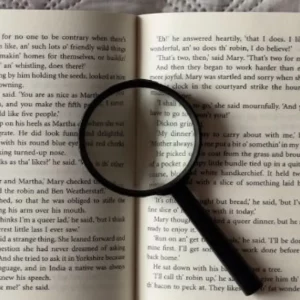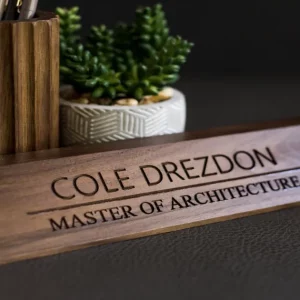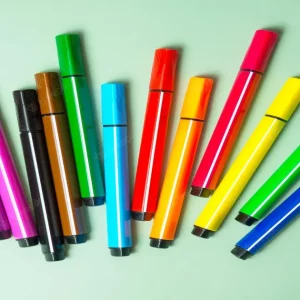Pencil sharpeners are among some of the most common office supplies used daily. There isn’t always an easy, fast way to replace these when they become dull. It is essential to keep your pencil sharpener blade sharp so you can properly work through the course of the day.
If you are looking for the best methods to do it, this is an excellent place. In this article, Manymoon will show you How to Sharpen a Pencil Sharpener Blade? and the best tips.
How to Sharpen a Pencil Sharpener Blade?

Step 1. Setting Up the Proper Workplace
Setting up a proper workplace may seem unimportant, but to me, it is. The appropriate workplace is a flat, solid surface. If the surface is not flat or stable, the sharpener may wobble. The Blade can cause damage in such a scenario.
Place the sharpener on the flat, solid surface. The Blade should be facing up.
Step 2. Get a Screwdriver
Depending on the number of blades, most handheld pencil sharpeners are held together by a screw or screws. The screwdriver should be the right size for the screw on the sharpener.
Usually, sharpeners use tiny screws. I had to try a few before landing on the right one. Fortunately, I have an eyeglass kit with a small screwdriver. It fits perfectly well with the sharpener screwdriver.
Some sharpeners use a flathead screw. If that’s the case, be prepared to get the appropriate screwdriver. If there’s no screwdriver small enough available, use something small and flat and can fit into the screw. A paperclip or a flat end of a fork can work. They are just harder to use.
Step 3. Remove the Screw
Insert the screwdriver into the screw and rotate it counterclockwise. Keep on turning until the screw is completely removed. Make sure to keep track of the screw so assembling the sharpener will not be a problem.
Step 4. Remove the Blade
Flip over the sharpener to loosen both the screw and the Blade. Don’t try digging out the Blade with your fingers; it can cut you. Here are pointers to keep in mind when removing the edges:
- Flip the sharpener upside down to remove the Blade.
- A little shake may be necessary.
- Hold the sharpener close to the flat surface to limit its bounce when it falls off.
Step 5. Repeat Steps 1 to 4 if there are more Blades
Some sharpeners have more than one Blade. If all those blades need sharpening, repeat the blade-removing process on all of them.
Step 6. Use a Sharpening Stone to Sharpen Blade
Here’s the tricky part. Sharpener blades are tiny and very challenging to hold while sharpening them. But it’s not impossible.
Weta sharpening stone with water. Some sharpening stones don’t need water, so make sure to follow the instructions from the manufacturer.
Others find that oil is a better whetstone lubricant instead of using water.
Place the sharpening stone on a damp cloth so it won’t move around when the sharpening process begins.
Some sharpening stones have different grits. The grit is the measure of the coarseness of a sharpening stone. The higher the spirit, the less coarse it is.
The rougher it is, the more metal it rubs off in a pass. Since sharpener blades are tiny, I suggest sharpening stones with a more delicate surface. They should have a higher grit.
Because sharpener blades are tiny, I suggest using a tweezer or, better yet, a needle-nosed plier to hold the Blade.
Slide the sharp end of the blade across the sharpening stone at a 20-degree angle. A few slides should be enough to sharpen the Blade.
Step 7. Clean the Blade
All it takes is to clean the Blade of gunks for it to work correctly. If this is the case, try rubbing a bit of rubbing alcohol on its surface. Even if this is not the case and sharpening is in order, cleaning it afterward is a good practice.
Step 8. Dry the Blades
After rubbing it with alcohol, dry the blades with a clean cloth. Leaving moisture on a piece of metal is a bad idea. It will oxidize. The metal will rust and corrode and essentially become useless.
Step 9. Reassemble the Sharpener
Now that the Blade is sharp and clean, it’s time to reassemble the sharpener. Use a tweezer to place the Blade in its position. Make sure that the sharp edge is on the right side. Screw it in place with a screwdriver (clockwise rotation). And it’s as good as new!

Why Does Pencil Sharpener Get Dull?
Your sharpener getting dull is as sure as the rising sun. It’s just one of those things you are sure will happen one way or another.
Using the handheld pencil sharpener subjects the Blade to friction which hastens wear, making it blunt. A couple of uses down the line makes the sharpener so dull that you cannot get a decent point from your pencil.
Some will throw the sharpener away into the bin, while others will go online and order a new blade, especially if the sharpener is one of those expensive devices you have in the office.
However, there are ways to push the usability of the sharpener further and make savings.
Pro Tips
Some of us don’t have the time to follow the delicate steps, and you don’t have to. Indeed, you have the option of getting a replacement blade. You can purchase a new pencil sharpener or an automatic pencil sharpener.

How to Sharpen the Blade of a Pencil Sharpener? Warning
Some people will opt to hold the sharpener blade with their fingers when sharpening. Please note the Single-Blade Pocket Sharpener blade is too small to do it safely, and it may cut the skin on your fingers.
Suppose you can’t find tweezers or needle-nosed pliers to hold it safely; get a new blade or sharpener. It may not be worth the trouble.
But for some, the process of sharpening the Blade is entertaining instead of being tedious. If you belong to this category, then by all means, get the right tools and get to work sharpening the pencil sharpener blade. Don’t overdo it, or you will end up with an unusable knife, which will be a waste of time.
You may need to wear some leather gloves to protect your hands against cuts when sharpening.
How to Sharpen a Razor Blade From a Pencil Sharpener? FAQs

Can You Sharpen a Pencil Sharpener With a Knife Sharpener?
A knife sharpener may not be designed to handle small blades, and in such a case, they are overkill. A better method is using waterproof sandpaper with a grit of between 300 and 600. Soak the sandpaper a bit with some oil and rub the Blade on it.
The main problem with sharpening the pencil sharpener blade is that you need to remove very little material. Overdoing it using tools such as the knife sharpener of a very coarse sharpening stone will move the center of the cutting edge and make the Blade inefficient. This is almost the same as when it was dull.
How Do You Clean a Pencil Sharpener Blade?
Gunk and other debris on the Blade can affect its working. It would help if you cleaned the edge.
You can use water or oil to clean the Blade, but make sure to dry it thoroughly, or the moisture will damage it.
To access the Blade better, you will need to remove or unfasten it from the sharpener and hold it well with tweezers of suitable pliers.
How Do You Fix a Pencil Sharpener That Won’t Sharpen?
There are different pencil sharpeners, and how you handle one may not be how you take another. The quality of some pencil sharpeners may be low, and re-sharpening is not an option.
Different manufacturers will use varying metals on the Blade, which affects its overall quality. Some metals are more durable and more accessible to sharpen than others.
But don’t expect to get this kind from the manufacturers. It is usually a case of trial and error.
Therefore, if the sharpener won’t sharpen, don’t stress too much, as getting a replacement blade or sharpener is much easier and more convenient.
Why Does My Pencil Sharpener Not Work Properly?
As mentioned earlier, the quality of the Blade may not be that good, and this can affect its functioning. On the other hand, the edge may have seen better days and is succumbing to the forces of wear and tear. This may also depend on the quality of the Blade.
In such a case, you have several options on your hands. You can sharpen the Blade or get a replacement blade. What do you prefer?
Conclusion
There are a few ways to sharpen the blade of a pencil sharpener. One way is to use a honing stone. Another way is to use a grinding wheel. Another way is to use a diamond sharpener. We hope that our guide can help you learn more ways to sharpen a pencil sharpener blade.









